How the GH-2 and GH-1 model hovercraft work
How the GH-2 works
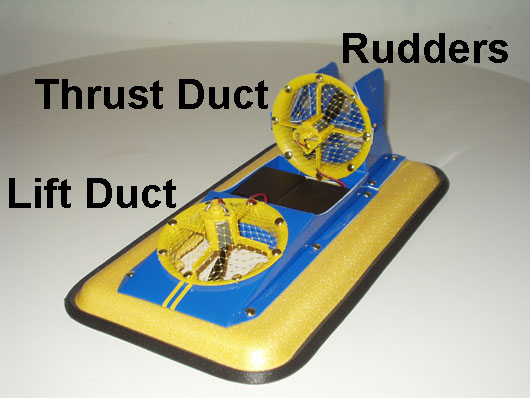
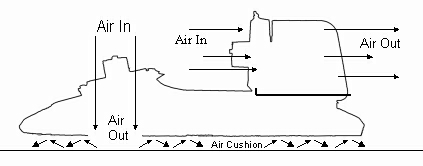
The GH-2 hovercraft has two ducts - a lift duct in the front and a thrust duct in the back. The lift duct sends all of its air underneath the craft so that the craft rises up on a cushion of air. The thrust duct sends all of its air out the back to provide thrust amd send the craft forward. As the air is sent out the back, it flows past rudders which help the craft go straight.
How the GH-1 works
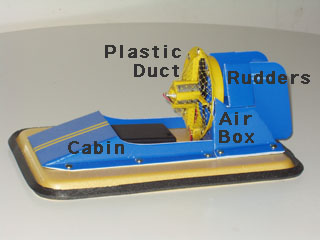
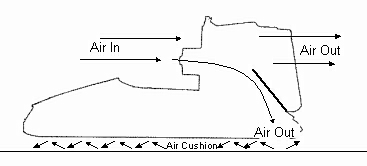
The GH-1 hovercraft has just one a plastic duct. The duct sends half of its air underneath the craft to create a cushion of air and sends the other half out the back to send the craft forward. The GH-1 has rudders which work just like the GH-2.
How the airbox is used in the GH-2

The GH-2 uses a part called an "airbox" to hold up the duct at the rear.
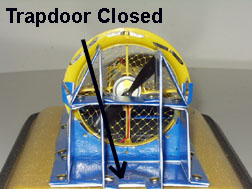
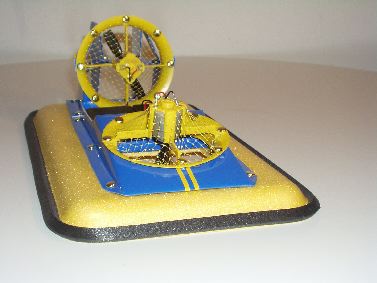
The airbox from Goldstein Hovercraft has a trick up its sleeve: a trap door. As the name suggests, the trapdoor opens and closes. When the trapdoor is closed, all of the air from the rear duct is sent out the back to provide thrust. The GH-2 is normally operated with its trapdoor closed.
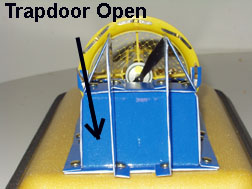
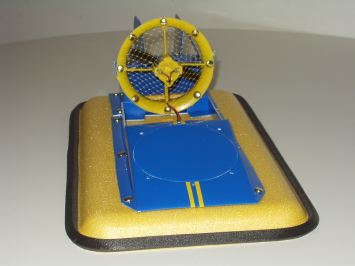
When the airbox trapdoor is opened, half of the air from the rear duct is sent underneath the craft to provide lift. Since the craft is now getting lift from its airbox, the lift duct in front can be removed. Of course, with only one duct, the craft has only half as much lift and half as much thrust, but it also requires half as many batteries. It is nice to have a choice. (And of course, that second duct can be used in a second hovercraft. Race, anyone?)
How the airbox is used in the GH-1

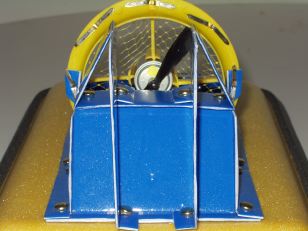
Since the GH-1 hovercraft comes with only one plastic duct, it always operates with its airbox trapdoor open. The GH-1's cabin and hull are optimized for one duct operation by being smaller and lighter.
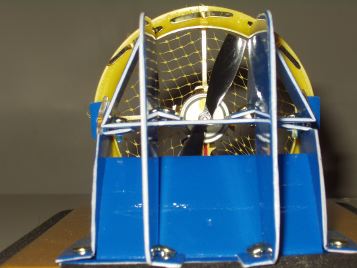
The trapdoor's position is adjustable. When extra batteries are used to produce more power, the trapdoor can be lowered, so that more air is sent out the back as thrust, and less air is sent underneath as lift. This results in a faster hovercraft, but one which hovers at a lower height than it would if the trapdoor was completely open. On a smooth surface, this might work out quite well, and might be just the trick you need to win a race. On the other hand, if you get greedy and go for too much thrust, you might not have enough lift, bump along on a rough surface, and end up going slow anyway. You'll have to experiment to find out which trapdoor position works best with different surfaces and different power levels. See our page on using different circuits for more information on how to use extra batteries.
Click here to return to the Goldstein Hovercraft main page.
Copyright © Goldstein Hovercraft, LLC All Rights Reserved











